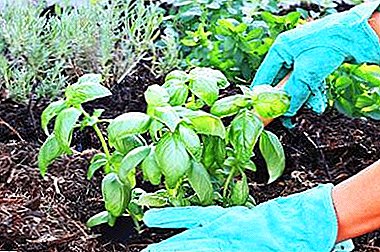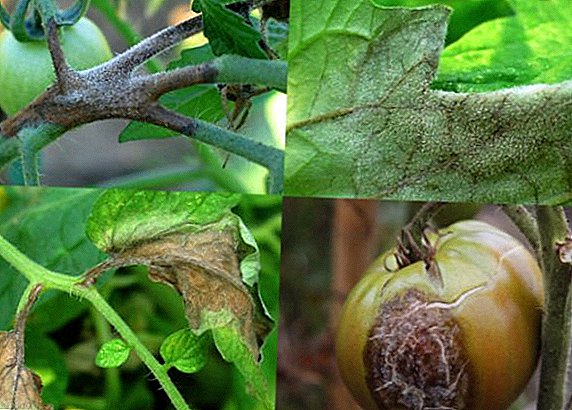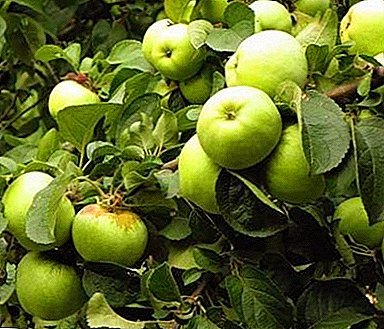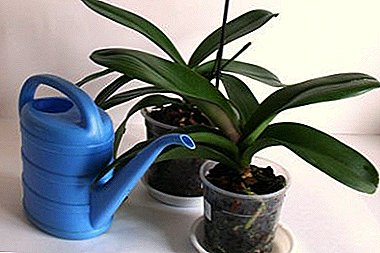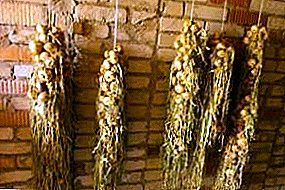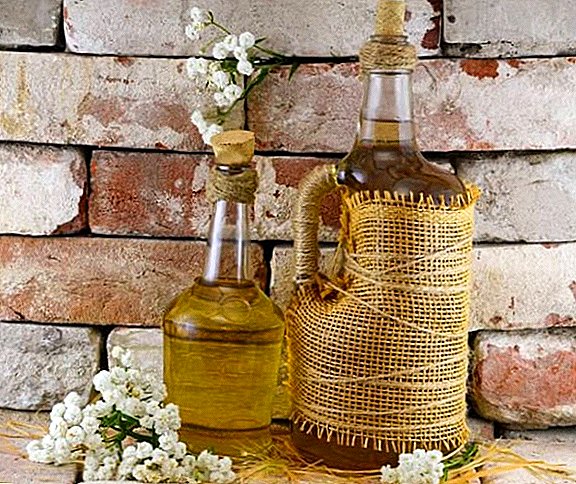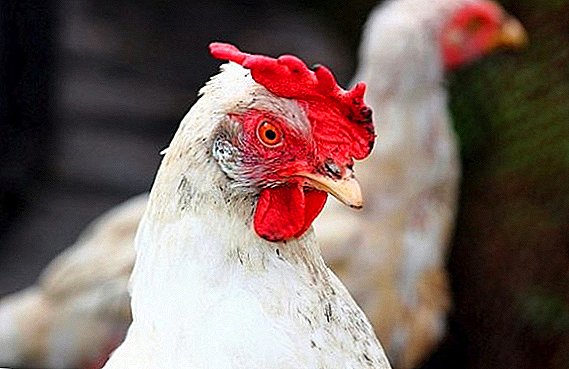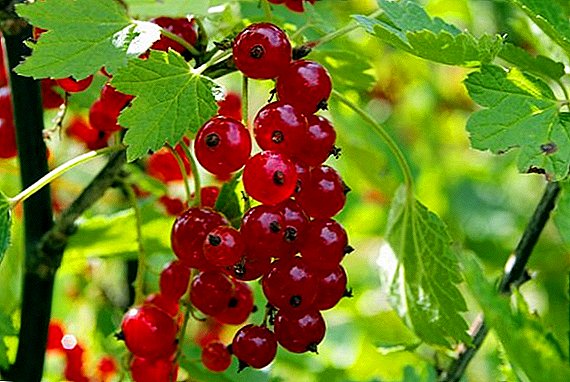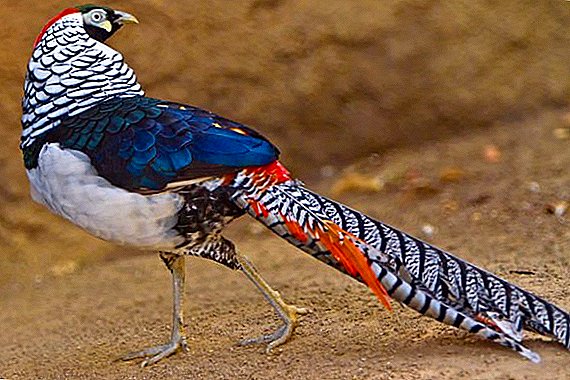 Breeding pheasants at home, like any farm business, has pros and cons. If you apply advanced technology and listen to the advice of experienced entrepreneurs, you can quickly recoup the investment. The meat of wild pheasant has long been valued by hunters because of unsurpassed taste. Nowadays, many farms successfully breed different breeds of these beautiful birds. Additional reason for growing pheasants - eggs like expensive dietary product.
Breeding pheasants at home, like any farm business, has pros and cons. If you apply advanced technology and listen to the advice of experienced entrepreneurs, you can quickly recoup the investment. The meat of wild pheasant has long been valued by hunters because of unsurpassed taste. Nowadays, many farms successfully breed different breeds of these beautiful birds. Additional reason for growing pheasants - eggs like expensive dietary product.
The main thing is to comply with an integrated approach: pheasants are distinguished by capriciousness to the conditions their content is expensive. But naturally grown pheasant meat at a bargain price you are more willing to buy status restaurant or cafe.
Pheasant Description
Poultry-like large birds stand out for grace and beautiful plumage. Only pheasant males have bright feathers, and females have a darker painted color. For home breeding, farmers often use ornamental, meat and egg species of birds. Golden pheasant brought from China. The appearance of the male decorative breed fully displays the name of the species of bird. On the head there is a lush crest of golden-yellow color, a high collar of bright orange feathers with a velvety black edging of the tips surrounds the neck. Feathers above the tail also shimmer in a golden hue.
 Diamond Pheasants also extraordinarily beautiful, they are often purchased for zoos. Homeland habitat - Tibet. The male of thermophilic breed has a black tuft, feathers have red blotches on the end. The forehead, cheeks, chin and throat area, back and sides are covered with shiny green feathers. Light feathers with a dark border are silver on the nape and neck collar. The breast, abdomen and "pants" are completely white. Pinetail feathers stand out in length and bright red color.
Diamond Pheasants also extraordinarily beautiful, they are often purchased for zoos. Homeland habitat - Tibet. The male of thermophilic breed has a black tuft, feathers have red blotches on the end. The forehead, cheeks, chin and throat area, back and sides are covered with shiny green feathers. Light feathers with a dark border are silver on the nape and neck collar. The breast, abdomen and "pants" are completely white. Pinetail feathers stand out in length and bright red color.
Steppe Hunting Pheasant - a representative of the egg breed. It gets along well in temperate climates. The breed has a strong immunity, is not afraid of sudden changes in temperature and unpretentious to the diet. For breeding meat poultry it is better to opt for a silver pheasant. Its long beautiful feathers are used to make decorative accessories and stuffed animals.
Choose a breed of bird, not only in appearance - consider easy pheasant care. At the initial stage of doing business, buy representatives of the hunting breed of birds. They are most adapted to our climate.
Bird Content Requirement
Organizing a farm for breeding pheasants will require considerable material investments. For advantageous breeding, you need to take care of a suitable space for keeping families of pheasants (effective area of an enclosure is 5 sq. M.). Before the start of construction, you need to decide on the breed of bird for breeding:
- birds for hunting better kept in high cages so that they learn to fly;
- meat breeds will not require high barriers;
- taking into account the resistance of the rock to frost instead of transferring individuals to warmed winter houses, consider a removable fence and a roof for an open-air cage during the winter period.
 Adult pheasants in a large herd often pluck feathers from each other. Farmers who know how to grow pheasants at home, are recommended to buy special plastic glasses for birds to save feather cover. Accessories can be ordered from the masters in large quantities.
Adult pheasants in a large herd often pluck feathers from each other. Farmers who know how to grow pheasants at home, are recommended to buy special plastic glasses for birds to save feather cover. Accessories can be ordered from the masters in large quantities.
Each breed has individual requirements for everyday food. Feed must contain adequate amounts of calcium and protein. With a lack of food pheasants can eat their neighbors in the aviary.
Did you know? Pheasant females are distinguished by a bad memory - they often forget about the place of laying their eggs. Depending on the breed, pheasant harvests leave eggs in different places - on the ground, in the bushes and even in the trees. Therefore, there is a need to purchase an incubator.
Bird needs to create as close as possible to the wild nature. Therefore, with a lack of experience in the breeding of poultry, it is desirable to acquire grown young.
Egg Incubation
An adult female produces about a hundred eggs per year. Physically, she is not able to incubate such an amount. In solving the problem will help the construction of the incubator. The device will quickly pay for all investments, because pheasant chicks are in constant demand in the market. Incubation for any kind of bird will always seem to be a complicated technological process. Pheasants practically never breed in captivity, so it is important to equip the incubator and the warmed cages for future offspring.
 Females begin to lay eggs approximately 14–20 days after mating. It is advisable to move the hatched eggs from the hen after 20-22 days to the incubator. From the beginning of the laying period, pheasants rapidly increase their egg production until the end of spring - the beginning of summer. Then the number of eggs laid gradually decreases. Provided that the farmer picks the laid eggs daily, The female during the nesting period will be able to give about five dozen.
Females begin to lay eggs approximately 14–20 days after mating. It is advisable to move the hatched eggs from the hen after 20-22 days to the incubator. From the beginning of the laying period, pheasants rapidly increase their egg production until the end of spring - the beginning of summer. Then the number of eggs laid gradually decreases. Provided that the farmer picks the laid eggs daily, The female during the nesting period will be able to give about five dozen.
Important! Almost 79% of chickens hatch from pheasant eggs. For hatching they often attract ordinary chickens - they perceive pheasant eggs as their future offspring.
Rearing chicks
Getting pheasant from home farm eggs is an affordable and budget option. But the growing offspring produced in their household is not always enough. Buy pheasant chickens from neighboring farmers. When buying young stock, choose a well-fed and lively specimens, without visible external damage. The first 3-4 months chicks have no sex differences, the final color is visible in the second year of life after summer molting. The broken feather in the wing of a chick is not considered a serious defect. In exchange for the torn out in two or three weeks, the new will grow. Every year, at the beginning of the summer season, the plumage is gradually updated.
If you managed to prepare eggs in an incubator for hatching pheasant, prepare for the first three days to maintain a stable temperature of + 28 ° C. For food, cook a boiled egg, finely chopped together with greens, and feeding with flour worms is allowed. The following month, gradually reduce the temperature to + 20 ° C in order to prepare young pheasants for life in an open-air cage. Grown up youngsters can take food intended for adult farm pheasants.
Device aviary
In wild natural conditions, pheasants fly away at first danger or hide in branches of bushes or low tree crowns. The habitual refuge created on the farm in the form of an aviary for a pair of birds should have a minimum size of 1.5 x 2 m. The roost for a night's sleep is made of wooden stubs at a height of up to 2 meters.
There are some rules for arranging an enclosure for a pheasant: 
- for arrangement of the house, give preference to a dry place;
- wall material - galvanized steel, mesh size - 16 x 24 mm (to protect the feed from theft by other birds);
- a layer of sand with ash admixture (up to 10%) is the best option for sprinkling the floor covering of an open-air cage; it requires replacement after heavy contamination with bird waste;
- to protect the house from rodents, it is desirable to provide a grid floor under a layer of sand;
- Pheasants practice "bathing", so put in a cage low trays with the aforementioned mixture of ash and sand;
- take care of reliable installation of steel feeders and drinkers - pheasant should not turn over or climb on their feet;
- at the beginning of the nesting period, the aviary is supplemented with special huts for females with two outlets from reeds or reeds; to simplify nesting, females throw dry leaves, moss and grass, thin branches of trees into the aviary;
- transportable aviary cages should be equipped with top shading from the sun's rays;
- The back walls of the aviary should be protected from windy and rainy weather with a polycarbonate sheet.
- An open-air cage should be adapted to quickly find laid eggs - females tend to forget their laying places and this role is transferred to the farmer.
In addition to the above items do not need to invent additional tools for breeding pheasants at home in order to avoid crowding for birds. A decorative enclosure in the garden with a true imitation of the usual space for birds in the wild will require more territory. To decorate the landscape, it will be necessary to plant living trees and bushes for a perch and to set up a flowing stream (reservoir).
Breeding season
The broodstock is formed from large healthy young stock, obtained from active egg pheasants. The optimal age for mating:
- for females - from 8 to 18 months;
- for males - from 1 to 2.5 years.
 Farmers specializing in breeding a particular breed do not use birds of 2–3 years of age, replacing them with young animals. Pheasants are rejected with chronic diseases or after serious injuries. Avoid content in the same aviary of several males during the mating season. - birds become aggressive, can harm each other.
Farmers specializing in breeding a particular breed do not use birds of 2–3 years of age, replacing them with young animals. Pheasants are rejected with chronic diseases or after serious injuries. Avoid content in the same aviary of several males during the mating season. - birds become aggressive, can harm each other.
In the cage during the mating season, one male and two to three females are placed. For the formation of a family pheasant it is necessary to select individuals that are not united by kinship. If selected birds for a family show no interest in mating, family members should be replaced by others.
Feeding pheasants during the mating season is slightly different. A month before the nesting period, special preparations with antibiotic action are introduced into the diet of adults. This is important for increasing the egg production of pheasant in the breeding season (20-45%). Antibiotics increase the number of fertilized eggs. On 1 kg of feed injected one of the drugs in the dose:
- 21.5 g erythromycin;
- 0.3 g penicillin sodium;
- 1.1 g of terramix;
- 0.7 g of biovita-40;
- 0.02 g of biomitsin.
 By the beginning of the nesting period for obtaining new offspring, it is necessary to carefully clean and disinfect the cells of the house. For females should be created optimal conditions for the arrangement of nests. In the wild, pheasant nests in the bushes. Taking into account this feature, several rare bushes are planted or several sheaves are put up closely, closely interconnected, resembling a hut construction. Desirable material for the "shelter" of the female:
By the beginning of the nesting period for obtaining new offspring, it is necessary to carefully clean and disinfect the cells of the house. For females should be created optimal conditions for the arrangement of nests. In the wild, pheasant nests in the bushes. Taking into account this feature, several rare bushes are planted or several sheaves are put up closely, closely interconnected, resembling a hut construction. Desirable material for the "shelter" of the female:
- cereal stems;
- corn tops;
- reed;
- cane.
Features breeding pheasants
If you have not yet been able to learn from your own experience how to grow pheasants at home, start by purchasing young stock for the farm. It is important to do this in different regions of the country. Breeding chicks by kinship incest will lead to low resistance of the brood to diseases and poor fertility rates. Keep track of the number of females in each aviary - they should not be more than three individuals per male.
During the mating period, you need to carefully observe the behavior of the male. Sometimes he shows pronounced aggression towards females. For the comfort of females construct special protective captive fences. In them the birds will be in complete safety and will be able to nest for the laying of fertilized eggs. For too active males, sometimes it is necessary to increase the number of females to 4-7 individuals.
 Before buying a sexual partner for poultry, ask the seller about the method of creating cells characteristic of this breed. They come in two varieties: monogamous and polygamous. For the second species, 3-4 females will be needed, and this will lead to a decrease in egg laying. Monogamous families are settled in pairs in separate cells. Pheasants show unprecedented aggressiveness towards males of their own species, but at the same time they get along quietly, for example, with smaller songbirds. When choosing "neighbors" in the house, stop the choice on unpretentious and granivorous rocks.
Before buying a sexual partner for poultry, ask the seller about the method of creating cells characteristic of this breed. They come in two varieties: monogamous and polygamous. For the second species, 3-4 females will be needed, and this will lead to a decrease in egg laying. Monogamous families are settled in pairs in separate cells. Pheasants show unprecedented aggressiveness towards males of their own species, but at the same time they get along quietly, for example, with smaller songbirds. When choosing "neighbors" in the house, stop the choice on unpretentious and granivorous rocks.
Feeding pheasants
Feeding adults
Pheasants are unpretentious to feed. For everyday meals fit:
- greens (plantain leaves, wood lice, dandelions);
- leftover food from your table (cereal, cottage cheese, chopped vegetables, pastries, pieces of meat);
- grain mixtures (sunflower seeds, corn kernels, oats, millet, millet, etc.);
- legumes (beans, peas, soybeans);
- berries and fruits from your garden:
- insects and worms.
Did you know? The pheasant is the only bird that eats the Colorado potato beetle. Regular launching of adult young stock on the beds with potatoes will help preserve the harvest.ah
In the marriage period, the feed should be allocated calories. In winter, balance the food with healthy dry rowan berries and apples. The daily rate of food in the cold season - 75-80 g. In the summer, crushed lime, chalk, and shell rock are mixed into the food - important substances for the formation of the shell and beautiful plumage. It is important to monitor enough water in the drinkers.
Feeding the chicks
 After the primary egg feed, cereal impurities are gradually introduced into the daily diet of pheasant. The diet of chicks should contain:
After the primary egg feed, cereal impurities are gradually introduced into the daily diet of pheasant. The diet of chicks should contain:
- ½ corn by weight of food;
- grain in a similar amount;
- barley (not more than 40% of feed content).
Content in winter
Pheasant is considered to be cold-resistant bird. But owners of pheasant farms recommend sticking to special conditions for keeping pheasants in winter. In cold weather, pheasants are whimsical to the lack of free space in the cage. For climatic zones where persistent winter frosts can be traced, it is advisable to adapt the aviary for wintering birds. The bottom of the cells is lined with warm material, sheds are constructed to protect against frosty wind. The open-air cage is complemented with artificial tube lighting so that birds do not forget to use the right amount of food.
In winter, the nutrition is sure to improve - the diet should be diversified by the introduction of vitamin supplements, fish oil or yeast (3 g per pheasant). Gradually, from the end of autumn it is necessary to increase the daily dose of grain by 5 g per bird. Winter diet includes:
- grain mixtures of corn, sunflower, millet;
- dry greens (hay from dandelions, clovers and herbs);
- fruits of rowan and chokeberry berries, apples.
Protection against parasites and diseases
 Pay attention to the state of health of the bird, if you notice a violation in the usual routine. Pheasants of different breeds suffer from ailments of three types: infectious, non-infectious, invasive.
Pay attention to the state of health of the bird, if you notice a violation in the usual routine. Pheasants of different breeds suffer from ailments of three types: infectious, non-infectious, invasive.
The first view includes smallpox. Infectious disease often leads to the death of birds. Signs of smallpox: rash on the paws and on the scalp, where feathers do not grow; heavy breathing and hoarseness in the voice; general exhaustion and loss of appetite. The illness is treated with antiviral drugs, the rash that has arisen is treated with a solution of lugol.
Laryngotracheitis virus transmitted by air, after eating feed and water contaminated with pathogens. The latent period is 1-5 days. Signs of illness: poor appetite; coughing and sneezing; dyspnea; reduced egg production in females; defective eggshell. Treatment is prescribed by a veterinarian after the results of tests in the laboratory.
Aspergillosis causes fungal infection. The disease affects the bronchi and air sacs. Signs of a fungal disease: excessive thirst, increased interest in drinking, cyanosis of the beak and legs. To get rid of the avian fungus, the veterinarian prescribes antifungal aerosols.
The group of non-communicable diseases includes dermatitis. After a skin injury, inflammation of the red color occurs, and over time a brown crust covers it. The disease requires an integrated approach and the duration of treatment with antibiotics and vitamin preparations. Skin wounds should be lubricated with iodine solution.
 Emphysema causes the formation of unnatural bumps throughout the body, which are mixed with pressure. After piercing the air escapes from the holes. The cause of the disease lies in the rupture of the walls of the air sac. Signs: stillness of pheasant, refusal to eat. Ailment is treated by limiting mobility by placing it in a tight cage and applying a cloth dressing on the wings. Bubbles should be constantly pierced and treated with antiseptic liquids.
Emphysema causes the formation of unnatural bumps throughout the body, which are mixed with pressure. After piercing the air escapes from the holes. The cause of the disease lies in the rupture of the walls of the air sac. Signs: stillness of pheasant, refusal to eat. Ailment is treated by limiting mobility by placing it in a tight cage and applying a cloth dressing on the wings. Bubbles should be constantly pierced and treated with antiseptic liquids.
The third type of disease characteristic of domestic pheasants is scabies. Skin disease is caused by ticks. Signs of scabies: lime growths from the corner of the beak; gradual baldness of the head; damage to the feather cover of the body. For treatment, the affected areas are carefully cleaned and lubricated with a solution of neguven (0.15%).
Pheasants are also at risk small louse in the warm season. Carriers of larvae pests are mosquitoes and midges.Pheasants on their own cope with the disease due to "bathing" of a mixture of ash and sand. In advanced cases, the body must be treated with insecticidal drugs.
Product sales
There are several ways to make a profit from the pheasant farm. Profitable type of earnings is considered selling pheasant eggs. By nature, females lay several times more eggs than they can sit. Incubator equipment and sale of chicks. Quick payback - within one month you will be able to return the funds invested in the construction of the incubator. Eggs for culinary purposes are estimated from 55 to 200 rubles. for 1 pc. The dietary product is highly appreciated by allergists and is recommended for baby food.
 The second direction of pheasant farms - sale of thoroughbred pheasants. You will have a good bargain for the supply of poultry to hunting. For wealthy people, hunting for pheasants has always been a favorite hobby, for farmers - a unique opportunity to help out from 1250 to 1600 rubles. for the wholesale sale of adult birds. Businessmen often buy collectible pheasants for suburban mini zoos. Proper selection of decorative rocks will allow you to secure a comfortable future.
The second direction of pheasant farms - sale of thoroughbred pheasants. You will have a good bargain for the supply of poultry to hunting. For wealthy people, hunting for pheasants has always been a favorite hobby, for farmers - a unique opportunity to help out from 1250 to 1600 rubles. for the wholesale sale of adult birds. Businessmen often buy collectible pheasants for suburban mini zoos. Proper selection of decorative rocks will allow you to secure a comfortable future.
Selling birds for catering needs - the third direction for the permanent income of the farm. Exotic tender pheasant meat is in great demand due to its taste properties. You can profitably sell fresh carcasses to elite restaurants for banquets. The cost of 1 kg of pheasant meat is now from 1,5 thousand rubles. Feel free to enter into direct regular supply agreements with restaurateurs. Pheasant meat is not sold in public trade, so your farm will quickly find a permanent distribution channel for a dietary product.


